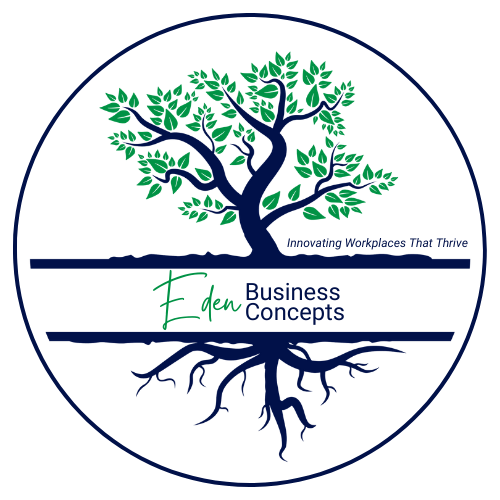

This morning, my young friend sat across the table for our regular coaching conversation. He is a thoughtful, focused entrepreneur in his early twenties, launching a creative online business. Typically upbeat, enthusiastic, and hopeful – he’s always ready to talk through the next step in his process.
Today his eyes and expression told a different story: pensive, anxious, frustrated. He spoke from a well of anxiety and confusion churning up in his heart, distracting his purpose and clouding his focus.
He and his peers are surrounded by universal disunity and dysfunction. This is his first experience of societal upheaval, and it’s taking a toll on his emotions and well-being. He feels overwhelmed by the pandemic-driven chaos and confusion, warmongering, climate crisis, economic uncertainty, the cacophony of news, opinion, disinformation, and social media noise. This environment is a stress-filled burden that makes him feel unstable and unsafe. He fears for his future and the future of his generation.
It’s not unlike what other living generations have lived through: regional and world wars, the Great Depression, assassinations, racial turmoil, a presidential resignation, the Cold War, economic instability, terrorist attacks.
Yet, somehow, the current situation seems amplified. The massive amount of information pouring into our smartphones and inboxes is impossible to process in any thoughtful way. We hardly feel the gravity of an enormous loss of life in another part of the world, but we feel furious that the internet is down, so we can’t access our social media accounts. Both are out of our control, and neither response, apathy or anger, is productive.
As leaders, we can focus on what we can control and cast a shadow of wisdom, inspiration, and peace that others can walk in. We can’t control what others do, feel, or believe. What we can control is how we respond. We can choose to lower the noise in our minds and hearts by paying attention to emotions and becoming mindful of our present situation and needs. We can turn off the media stream and focus on what matters. We can choose to respond to others with patience, kindness, and compassion. We can choose to avoid speculation and take care of the people, needs, and issues in front of us.
Our friend and management consultant, Tim Duncan, spent four months interviewing 50 business leaders about the challenges they are facing. Like my young entrepreneur, they too feel the burden of the chaotic, unpredictable, unstable world they are serving with their products and services. Tim summarized his conversations with these business leaders in a report: Leading through Collective Trauma. I provided a link in the resources below.
Tim writes:
“As I thought about the news, the responses from those I interviewed and personal stories over the past two years, I began to wonder what an Organizational Psychologist would call this seismic change that seems to be taking place. My answer came from a book published in 1972 by American Sociologist Kai Erikson called “Everything in Its Path” where he coined the phrase “Collective Trauma”. Basically, it refers to the psychological reaction to a traumatic event shared by any group of people that can affect an entire society. For example, the Holocaust, the Great Depression, WWII, 911, etc.”
“Over the past two years, we have endured a significant amount of disruption to our everyday normal lives. We experienced a series of events starting in early 2020 with the COVID outbreak, then the social justice marches (which turned into riots, looting, and violence), then the capital riots, housing cost increases, the Delta variant, the great resignation, supply chain issues, inflation, and now the Omicron variant.”
“During this time, business leaders have been faced with the daunting task of maintaining their businesses, protecting their staff and customers, navigating the social and health issues that change the landscape, and meeting the needs of their families. Many have been impacted in very personal ways.”
“During this time of instability and change I wanted to hear how corporate business leaders and business owners were coping with some of the more significant issues, what skills and abilities do they leverage and what they would like to see happen assuming all goes well.”
In the interviews Tim conducted, leaders cited three challenges most often.
- The amount of turnover and the difficulty of filling open positions within their organizations. One organization had hired 30 recruiting firms and had still not found a single qualified candidate. One company had hired someone, only to have them quit two weeks in for double the salary.
- The need to transform to meet the changing needs of the customer and to remain competitive. Whether it is the changing landscape due to regulation, customer behaviors, competitive entrants, or technology, many businesses are challenged with outdated and/or inflexible frameworks.
- The current supply chain shortages and price increases. Between labor shortages, congestion at key maritime ports, and a lack of space on vessels and containers, ocean freight faces massive delays and elevated rates. Leaders are faced with either escalating prices or the inability to get the needed goods they require.

The leaders also mentioned several other areas of concern:
-
- Driving sales/competing, engagement/motivation/expectations
- Executive turnover
- Regulation
- Data protection
- Globalization
- VUCA (Vulnerability, Uncertainty, Confusion, Ambiguity)
Tim also asked the leaders several questions to understand how they saw themselves as leaders, including their legacy, traits, and business culture. You’ll find the questions and their responses in the full report.
As he concludes, Tim suggests four steps to consider as we continue to navigate the significant changes around us:
-
- Recognition and Acceptance: things are different now, and they will continue to be different.
- Define a clear purpose: start with “why”? Why do you exist? Why are you doing what you do?
- Vision: define a clear picture of your desired future that everyone understands and engages
- Implement the vision: at the right pace, with full communication, and comprehensive support
Above all, wherever you are, whomever you lead, whatever the challenges – please don’t go this alone – get a team, a community, and a cheering section for yourself and those you lead.
We have no idea where all this is going to land. We do have the ability and responsibility to take care of ourselves and those in our leadership shadow while we continue this journey together.
If you haven’t had a chance to listen to our recent podcast on this topic, you can check it out here:
To Your Health!

Resources for this topic:
Q&A for this topic:
- How are you responding to the societal upheaval around us?
- How are you responding to the leadership challenges in your business?
- What do you need to recognize and accept without anxiety or drama?
- How are you defining and implementing the purpose and vision for those you lead?



